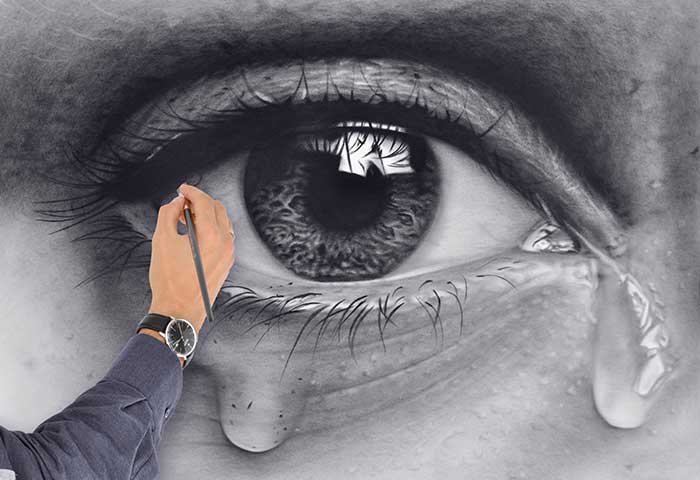[ad_1]
The fourth and final phase of the basic oil painting process is the detail phase. This is the time to incorporate all the details like small decorations, fine textures, and highlights.
At the end of the first phase we are left with a complete drawing of the scene we wish to paint. The purpose of the second phase (the block-in phase) is to take the drawing and transform it into a series of large colored shapes. These large shapes must have the correct geometry and color. The third phase, ie, the shaping phase, consistors of modeling and refining the large colored shapes we produced in the second phase.
By the end of the shaping phase we should have more or less a finished painting. There are no white canvas left and all objects and subjects should be drawn and colored correctly. So all that is left to do is adding the details.
Details include things like small twigs, pupils, eye lashes, small lines and curves, and highlights on a cheek or piece of clothing. In short, anything that can not be done with a large brush.
Some details will require the use of thinned-out paint. For example, when adding thin lines or curves for hair or grass, we can get good results by using thing paint. However, in these situations you should always be aware of the so-called
fat-over-lean rule of oil painting.
The fat-over-lean rule of oil painting states that you should always paint fat over lean. The words fat and lean refer to the amount of oil contained in the paint. So, in principal, when applying layers of oil paint on top of each other on your canvas, you should always apply a fatter layer on top of a leaner layer. If you put a lean layer on top of a wet fat layer changes are that, after some time, the lean layer will start to show cracks.
Other details may require the use of thick paint often right out of the tube. This is the case with heavy highlights and very intents accents such as red reflection on a roof of a house.
The reason details are better added at the very end as a fourth phase is that they are usually quite small and need to be placed very precisely. Therefore, it is better to start with painting large general shapes and then to progressively add refinements until the entire scene is correctly reproduced on your canvas. It then becomes much easier to place the details in their correct locations.
Also, details are often meant to be accents of intense color which requires thick paint and therefore, according to the fat-over-lean rule, are best put on last.
Finally, with the benefit of an almost finished painting it becomes much easier to judge if the added details are artistically well-distributed. For example, it is almost always the case that a focal point area will have more detail than other areas. For comparison purposes it is a good thing to have at your disposal a general overview of the entire painting.
[ad_2]
Source

